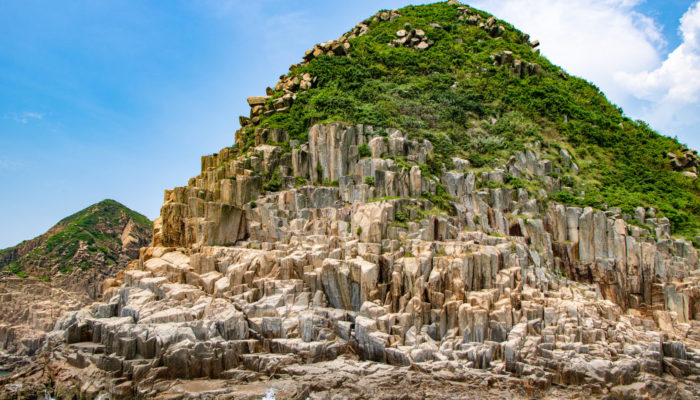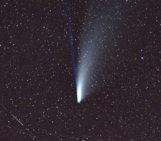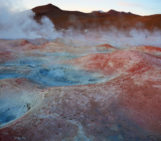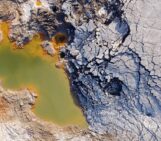
The picture shows the world’s rarest hexagonal rhyolitic volcanic rock columns on the northern island of the Ninepin Group in the easternmost waters of Hong Kong. These rocks columns are believed to form about 140 million years ago after a major volcanic eruption near Sai Kung. When the volcanic ash and lava slowly cooled down, joints and cracks started to develop on the surface and then extended downwards. The contraction of cooling resulted in hexagonal rock columns.
The large rock columns suggest that they were formed in a very stable environment, where the cooling process was relatively slow. Weathering and erosion have great impacts on forming the current landscape of the Ninepin Group. There were inclined joints or cracks in the rocks. After a long period of weathering, the rocks above the joints were eventually shed down and gradually became the rugged but spectacular landscape we see today.
Photo by Angel Ling, as described on imaggeo.egu.eu.
Imaggeo is the EGU’s online open access geosciences image repository. All geoscientists (and others) can submit their photographs and videos to this repository and, since it is open access, these images can be used for free by scientists for their presentations or publications, by educators and the general public, and some images can even be used freely for commercial purposes. Photographers also retain full rights of use, as Imaggeo images are licensed and distributed by the EGU under a Creative Commons licence. Submit your photos at http://imaggeo.egu.eu/upload/.




